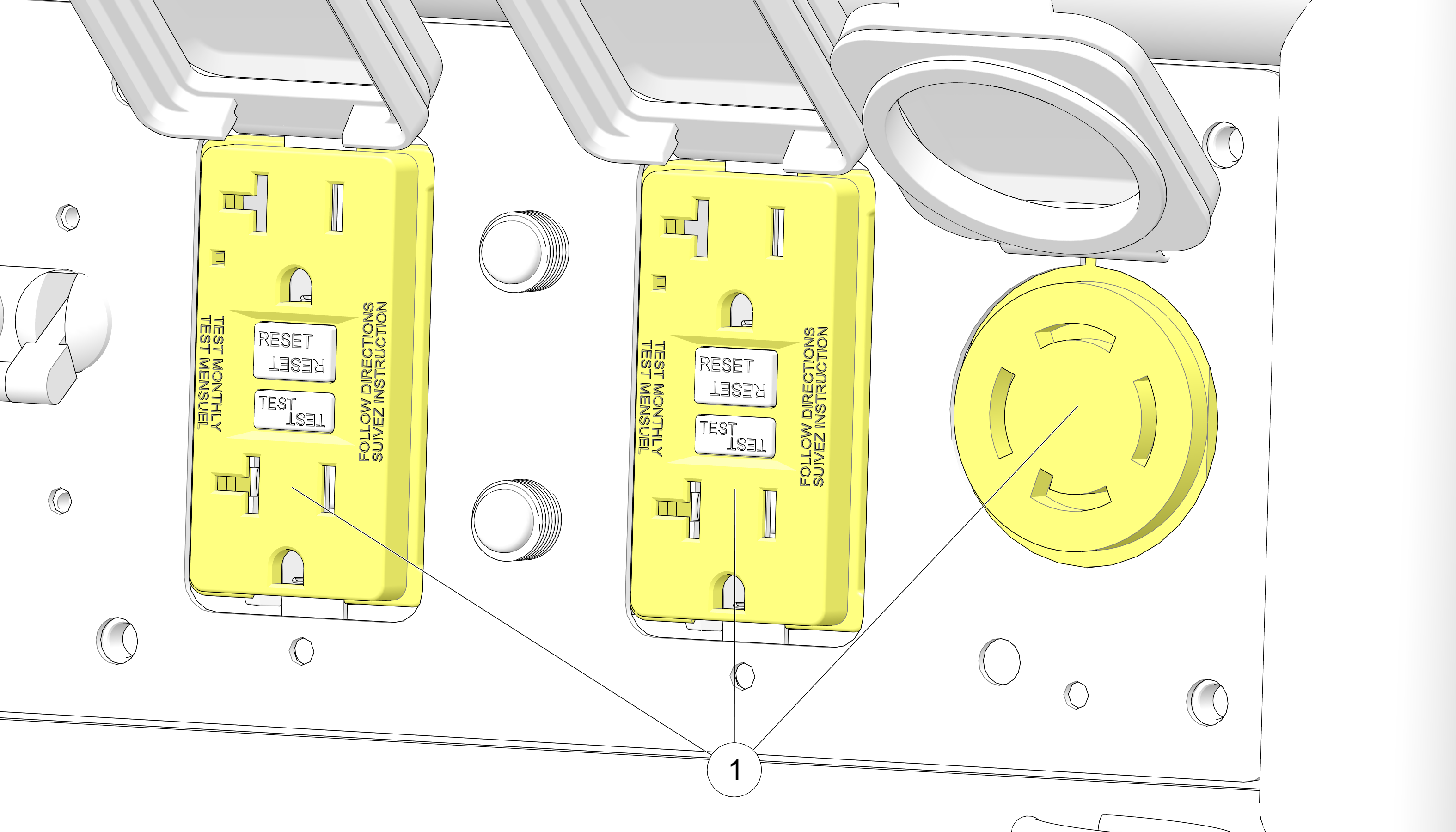 WARNING WARNING |
Before connecting a device or power cord to the generator, ensure it is in good condition. Faulty appliances or power cords
can create a potential for electrical shock.
- If an appliance begins to operate abnormally, becomes sluggish, or suddenly stops, immediately shut it off. Disconnect the
appliance and determine whether the problem is the appliance or if the rated load capacity of the generator has been exceeded.
- Ensure the combined electrical rating of the device or appliance does not exceed the maximum allowed by the generator. Never
exceed the maximum power rating of the generator. Do not exceed the current limit specified for any one receptacle. Power
levels between rated and maximum may be used for no more than 30 minutes.
IMPORTANT: Before connecting a device or power cord to the generator, ensure the device or cord is in good condition and electrical
rating does not exceed the maximum amount allowed by the generator. |

- Start engine. See Starting the Engine for additional instruction.
- Confirm the desired appliance is switched off. Then plug the appliance or extension cord into one of the AC receptacles
 .
.
- Turn on the appliance.
| NOTICE |
| Should the generator's maximum load of 25 amps be exceeded, the circuit protection device will trip and cut all current to
the receptacles. The engine will continue to run.Correct the load by unplugging all appliances from the receptacles and press-in
the circuit protector button to reset, followed by the Overload Reset button. AC power will be restored immediately. |
AC Capacity
| Model |
Max Power |
Rated Power |
| P5500 |
5500 W |
5000 W |
| P6500 |
6500 W |
6000 W |
| NOTICE |
|
In case of substantial overloading, the electronic circuit protector will activate. Slightly overloading the generator or
running at maximum power operation (30 minutes) may not switch the circuit ON, but will shorten the service life of the generator.
|
Consider total power requirements of all connected devices. Appliance and power-tool manufacturers typically list rating information
near the model or serial number. After plugging in a device, allow the generator to stabilize before plugging in additional
items. Always consider generator capacity before plugging in any device.
Typical wattages are listed in the table below. Before plugging any device into the generator, verify the manufacturer-listed
wattage on the device.
Wattage Reference Table
| Device |
Running (Rated) Watts |
Additional Starting (Surge) Watts |
| Table Saw / Radial Arm Saw - 10” |
2000 |
2000 |
| Space / Wall Heater |
1800 |
0 |
| Central Air Conditioning |
1500 |
4500 |
| Circular Saw - 7 1/4” |
1400 |
2300 |
| Hair Dryer |
300 - 1200 |
0 |
| Sump Pump - 1/2 HP |
1050 |
2200 |
| Microwave Oven - 100 Watt |
1000 |
1400 |
| Coffee Maker |
1000 |
0 |
| Garage Door Opener 1/2 HP |
875 |
2350 |
| Personal Computer w/ 17” Monitor |
800 |
0 |
| Refrigerator |
400 - 800 |
2200 |
| Dehumidifier |
650 |
800 |
| Color Television - 27” |
500 |
0 |
| Electric Drill - 3/8”, 4 amps |
440 |
600 |
| Paint Sprayer |
360 |
1080 |
| Radio |
300 |
300 |
| Oven |
60 |
7500 |
| Light Bulb - 75 Watt |
75 |
0 |
Power Management Example
| Device |
Running (Rated) Watts |
Additional Starting (Surge) Watts |
| Circular Saw |
1400 |
2300 |
| Halogen Work Light |
1000 |
0 |
| AM/FM Radio |
100 |
0 |
- 2500 = Total Running (Rated) Watts
- 2300 = Additional Starting (Surge) Watts
- 4800 = Total Generator Output Required
 caution caution |
|
Ensure the combined electrical rating of the powered device(s) do not exceed the maximum output allowed by the generator.
Never exceed the maximum power rating of the generator. Power levels between rated and maximum may be used for no more than
30 minutes.
|

